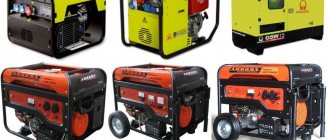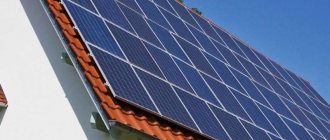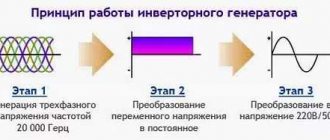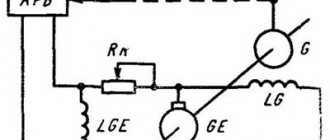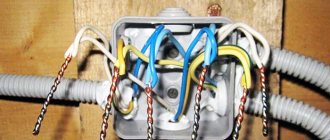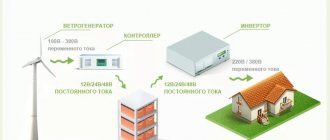Home » Household appliances » Connecting equipment » Installation of a diesel generator
If you have already selected a quality diesel generator, then you can now begin installing it. This is a responsible process, since the service life of the power plant will depend on the correctness of the equipment in the future. Installing a diesel generator can also be done independently.
In this article, you will learn the steps to install a diesel generator indoors and outdoors. We have also tried to provide you with the basic requirements for each of these methods.
Choosing a location for installation
First you need to choose the location where your power plant will be installed in the future. This must be done before you purchase it. Otherwise, you may not calculate the dimensions. Options for installing a diesel generator can be as follows:
- In a special soundproof casing.
- On an open frame.
- In a container that allows for reliable protection from the environment.
The last option is considered the most common today. In this case, you will no longer need to look for a special room in the building where you can install a diesel generator. When choosing a specific location, you also need to pay attention to local conditions. Accordingly, if you plan to install it in the country, then it is better to place the diesel generator indoors. This will protect it from theft. Thanks to the use of a diesel generator, it is possible to provide temporary power supply to the site during construction.
If you purchased a generator model in a special noise-insulating casing and want to place it indoors, then remember that it must meet the following requirements:
- There must be protection from external factors.
- Provide good ventilation.
- Provide the required level of illumination.
- There must be unobstructed access to the generator.
- The doorway must be of sufficient size.
Exhaust gas removal system
Exhaust gases from the engine must be exhausted to the outside through a properly designed exhaust system (not included) that does not create excessive back pressure on the engine. When installing a flue pipe, a number of conditions must be taken into account, such as resulting power loss, insulation, suspension, noise level, pollution, etc. The placement of the exhaust line must provide protection from drops of fuel and lubricants and any other flammable objects falling on its surface.
Discharge gases to a well-ventilated place in accordance with the requirements of local sanitary services. The outlet of the outlet pipe must be protected from atmospheric moisture. The main components of the exhaust gas removal system.
Pipes
It is recommended to use pipes without welded seams. It is possible to use pipes made from rolled sheets due to their weight characteristics. In any case, seams should not be allowed inside the pipe, so as not to increase the resistance. The output should only be carried out using pipes with a wall thickness of at least 1.5 mm. The use of tin boxes or corrugated boxes for installation of gas exhaust is unacceptable.
Hot sections of the discharge pipeline must be protected from possible contact.
It should be remembered that the more tortuous the exhaust pipe, the more power is lost and, therefore, the larger the diameter of the pipes must be used, which, in turn, makes the structure heavier and entails an increase in the cost of supports and mufflers. The bend radius of corner fittings must be at least 2D. It is better if the knee consists of one element.
If the elbow is made of welded plate, ensure that the 90° corner joint consists of at least three sections.
The diameter of the pipe required for installation of the station for a route length of up to 50 m must be no less than the diameter of the diesel exhaust pipe. Condensate and rainwater removal funnel Installed at the bottom of the system to protect the muffler and engine, as well as in places where the pipeline path changes horizontally/vertically.
Protection of the diesel generator set from atmospheric moisture or snow can also be provided by a valve, by sloping the outlet section of the pipe, or by cutting the outer end of the pipe at an angle of 60° to the horizontal. If the building is equipped with a smoke detection system, the outlet should be located so that it does not interfere with the operation of the smoke alarm. Muffler Since mufflers are large and heavy, consider their size and weight when planning your exhaust system. The muffler must be adequately supported so that its weight is not applied to the engine exhaust manifold or turbocharger. A thermal expansion joint or flexible joint should be used between the manifold and the first fixed portion of the exhaust piping system to prevent engine vibration from being transmitted to the piping and building, and to isolate the engine and piping from forces due to thermal expansion, movement, or the weight of the piping.
The weight of the exhaust pipe must not put pressure on the element shown. It must be installed evenly to prevent tearing. The muffler must fit into the available space without requiring additional bends in the exhaust pipe, which could cause high exhaust back pressure. The side-inlet muffler can be mounted horizontally above the engine, which does not require much space in the height of the room.
The muffler can be located close to the engine, and the exhaust pipe will go from the muffler to the outside; or it can be placed outside on a wall or roof.
Placing the muffler close to the engine allows for better overall noise reduction due to the minimum volume of piping leading to the muffler.
Maintenance and draining of the muffler will obviously be more convenient to carry out indoors. This is the most common muffler location.
If mufflers or parts of the exhaust piping are within the reach of personnel, they should be protected by fencing or insulation. Insulation not only protects personnel, but also reduces heat radiation into the room and reduces exhaust system noise.
The need to contain heat released into the room (which interferes with the cooling system) may also arise when using certain types of gas removal systems or for safety reasons. If thermal insulation is used on the gas removal system, the surface temperature should not exceed 70°C. The insulation is made from mineral fiber (not containing asbestos).
For aesthetic reasons and to improve thermal insulation properties, it can be covered with an aluminum shell. The minimum thickness of fiberglass is 50 mm. However, installing the muffler externally has the advantage that the muffler does not need to be insulated (although it should be surrounded by a protective shield). Work on insulating a pipeline indoors is easier when the muffler is located outside, and subsequently the insulation will help reduce noise.
Foundation preparation
When preparing the foundation, you must act carefully. This is due to the fact that vibration may occur during generator operation. If the foundation is truly strong, then this will prevent the diesel generator from moving during operation. To comply with all conditions, it is necessary to make a foundation weighing two or three times the weight of the generator. The depth must be at least 15 cm. Experts also report that the foundation itself must have no slopes.
When pouring the foundation, you also need to provide for the installation of mounting fasteners. In the future, they will make it possible to more reliably secure the diesel power plant. Here you can also learn about automatic generator starting.
Connecting electrical appliances to the generator
If we are talking about the first start-up, then it is better to connect the electrical equipment that will be powered from the power plant gradually. This will ensure safety, since the simultaneous connection of a large number of consumers in such a situation can provoke an overload and damage the electrical network in the entire house or the power plant itself.
Moreover, you should not make the connection yourself if you lack knowledge in this area, as well as relevant experience. The best solution is to use the services of an electrical specialist who has considerable experience in such matters.
This will help save money that would otherwise be spent on purchasing a new generator or repairing an old one, restoring burnt out wiring and eliminating the consequences of a fire (in the worst case).
The connection procedure is a labor-intensive process that requires compliance with a certain algorithm of actions and their error-free execution.
How to reduce vibrations
To reduce vibrations that may occur during operation of the power plant, special vibration isolators are provided in the design. Of course, they cannot always reduce vibrations and therefore, you need to take additional measures. Here are the basic recommendations to help reduce vibrations:
- It is necessary to ensure rigid attachment to the foundation.
- Special shock absorbers should be used, which should be installed between the base of the diesel generator and the foundation.
- Install the exhaust muffler system and soundproofing casing.
Also an effective way to reduce vibration would be to implement a flexible connection to the exhaust gas exhaust system. When connecting wires, flexible conductors must be used.
Grounding. Cable and connections
Grounding Grounding of all metal structures is carried out through a common ground. During the assembly of the diesel generator set at the factory, the grounding of all units of the diesel generator set: engine, alternator and control panel is reduced to one point on the frame of the diesel generator set. When installing a diesel generator set, it is necessary to connect grounding to the following elements: - DGU - Remote control panel (power module) (if any) - Fuel tanks and fuel lines - Cable channels and their overlaps The cable and connections of the open-type diesel generator set do not require laying a cable between the diesel generator set and control panel (AMF). Provision should be made for a signal cable to be laid between the control panel and the automatic transfer switchboard (ATS). In the case of a diesel generator set with a separately mounted control panel, the control panel should not be more than 10 meters away from the diesel generator set. Power cables: laid in a box or cable channel intended for cable laying. Power cables are selected by thermal calculation (short circuit power exceeds the rated power of the diesel generator set by no more than 3 times), in accordance with the table below for a cable length of 10 m, ambient temperature 40°C, voltage 380 V (3ph.)
*calculation of cable sections was carried out according to table 1.3.4 PUE edition 6.7 (revised and supplemented with changes in 2003) GGEN RF, Moscow 2000.
Cables and starter battery: The minimum cable cross-section is 70 mm2. The cross-sectional area varies depending on the power of the diesel generator set and the distance between the diesel generator set and the battery (voltage drop in the circuit).
Remote control cables: These cables are usually multi-core and are installed like power cables in boxes or ducts. The minimum values of these cables are given for a maximum distance between the diesel generator set and the control panel of 4 m. - Alarm signal 1.5 mm2 - Start control 4 mm2 - Starter battery voltage sensor 4 mm2 - Fuel shut-off solenoid valve 4 mm2 - Engine preheating 2.5 mm2
Carrying out electrical installation work
The most difficult stage when connecting a diesel generator is the installation and connection of electrical circuits. Basically, electrical installation work consists of the following stages:
- First you need to connect the electrical distribution board. It is also necessary to provide an automatic backup power supply circuit.
- High-quality installation and marking of power auxiliary circuits must be ensured.
- Now you can start connecting all cable lines.
- To ensure better protection, it is necessary to install an individual grounding circuit.
Below we have placed a video in which you can learn how to connect a diesel generator to the network at home.
It is important to know! You can find out all installation requirements in the PUE rules.
Additional fuel system
All generator sets are supplied with a diesel fuel tank built into the base frame. Some installations may require an additional or remote fuel source.
It is possible to use several options for an additional fuel system; - a system in which fuel enters the engine directly from a separate tank - a system in which the built-in fuel tank is used as a fuel expansion tank.
The use of the first version of the fuel system is limited by the distance from which the fuel tank is removed. Also, the height difference between the tanks relative to the axis of the crankshaft of a diesel engine should not exceed one meter. This is determined by the performance of the fuel pump on the engine, as well as the diameter and length of the inlet and outlet fuel lines.
The use of the second version of the fuel system is advisable if the additional fuel tank is located at a great distance and significantly exceeds the volume of the built-in fuel tank. In accordance with safety regulations, there should be no vacuum points such as siphon pipes in the return pipeline that could prevent normal fuel circulation. If the fuel tank is installed above the tank, an emergency valve and an anti-siphon device should be provided in the piping leading from the fuel tank. Additional fuel tanks with a volume exceeding 5 m3 must be installed in a special room, separated from adjacent rooms by walls made of fireproof materials with a fire resistance rating of at least 0.75 hours.
Pumps for pumping fuel from external tanks to supply tanks with a capacity of more than 4.0 m3/hour must be located in a separate room (building). There must be at least two fuel transfer pumps (one working, one standby). For diesel generator sets with a power of up to 100 kW, the backup pump can be manual. The performance of fuel priming pumps must exceed the fuel consumption when the diesel generator set is operating at full load. Additional fuel tanks with a capacity of more than 1 m3 are equipped with emergency drainage and overflow pipelines into an underground tank located at a distance of at least 1 m from the “blank” wall of the building and at least 5 m if there are openings in the walls. The capacity of the underground tank must be at least 30% of the total capacity of all supply tanks and not less than the capacity of the largest tank. It is allowed to carry out emergency drainage into an underground fuel reserve tank. For reserve diesel generator sets, it is recommended to provide a fuel supply for 15 days, unless another period is agreed upon, and for diesel generator sets, which are the main source of power supply, at least two tanks should be provided for storing diesel fuel.
Connection diagrams
Before connecting, it is worth drawing a special diagram on which the diesel power plant is indicated in the form of a circle with a wavy line inside.
Particular attention should be paid to connecting a generator with automatic start of 380 V, the peculiarity of which is that when the inputs are disconnected (when an accident occurs), the diesel generator set is automatically started and the loads are connected
There are also emergency ways to connect a diesel power plant, which have their drawbacks, for example:
- When connecting through a socket, there is a possibility of overloading the wire, causing the generator to suddenly stop (at best). This connection method does not allow monitoring the appearance of electricity on the main line.
- If there is a connection to a switchboard, then it is worth remembering that it is accompanied by a number of difficulties that can cause serious problems with the generator and electrical networks.
- When connecting through a switch, do not forget that this option is only suitable for people who are well versed in electrical engineering. An inexperienced person can cause damage to the generator and networks even during simple startup.
- Connection via AVR unit. Its disadvantage is the lack of additional protection during startup and installation.
When connecting a power plant, attention must be paid to ensuring galvanic isolation, which, if necessary, will allow energy to be transferred between circuits without electrical contact between them. Some people who have purchased a diesel generator wonder: what is the difference between a single-phase and three-phase connection? They should know that all connections in both diagrams are the same, but the number of power wiring differs
Some people who have purchased a diesel generator wonder: what is the difference between a single-phase and three-phase connection? They should know that all connections in both schemes are the same, but the number of power wiring differs.
An important point is grounding: it is accompanied by the creation of a full-fledged circuit designed to periodically remove static voltage from the body of the unit.
The ground electrode can be made from a metal rod 1.5–2 m long, a clamp, soft copper wire and a bolt.
Line or cylinder?
Main gas supply allows you to obtain fuel at a lower price, which means saving on electricity production in general. The pipeline supplies natural gas to the unit. The disadvantages of a centralized connection are the need to carefully calculate the installation plan, as well as its high cost.
In addition, it is necessary to enter into an agreement with the gas supplier (the owner of the pipeline or the local administration) in order to legally use the fuel and meet the minimum requirements for the registration of gas generators.
If a cylinder is used to supply the device with fuel, installation of the unit is simplified. But the owner may face the problem of purchasing and maintaining cylinders.
To ensure uninterrupted power supply, it is necessary to constantly stock up on new cylinders. It is advisable to create a separate room for their maintenance.
In addition, bottled gas is more expensive than mainline gas. It is liquefied, and additional requirements apply to it: a device that runs on liquefied gas must be located above ground level.
If there is no main gas in the area where the generator will be installed, liquefied gas remains the only option.
Cooling
To ensure the correct operation of the diesel power plant and extend its service life, it is necessary to ensure good operation of the generator cooling system during installation. First of all, we are talking about ensuring the normal and efficient operation of the built-in cooling system of the diesel generator. The power plant must be installed in such a way that nothing interferes with the functioning of the cooling system.
If the installation of a diesel generator is carried out in an existing room, for example, in a garage, basement or boiler room, it is necessary to make sure that the room has normal ventilation
Also, when considering a room to house a power plant, it is important to comply with all necessary fire regulations, since a diesel generator is a source of increased fire hazard
Parameters for choosing a diesel generator and control methods
When choosing a diesel generator for private needs, you should proceed from the actual purpose of the equipment. How often the stand-alone unit will be used and where it will be located.
When choosing a suitable diesel generator model, you must rely on the key technical and operational characteristics of the equipment:
- standard fuel consumption during equipment operation;
- degree of noise;
- number of phases on the power generating device;
- generator type;
- power and dimensions of equipment.
- the presence of a cooling system for the electrical installation;
- modification of device control methods;
- type of equipment housing;
The device should be selected in accordance with the full power consumed by all current-consuming devices. In addition, when choosing a unit, it is necessary to take into account the intended installation location of the power generating machine.
There are few ways to administer an aggregate:
- Manual control means that someone is constantly near the device to regulate its activities.
- The semi-automatic method has some automation. In this case, only turning on the generator remains manual.
- Generators with automatic control mode only require installing special programs and monitoring them. All information is displayed on an electronic display.
Today, models have been developed that are controlled remotely, but from a distance of no more than 25 meters.
We do not recommend:
- Ground one of the generator outputs to the common house PE bus (ground). If your ground “falls off” (a wire rots or a connection comes loose), dangerous voltage will appear on all grounded appliances in your home.
- Connect budget generators directly to the load without using network interference filters. Changing the generator speed causes strong interference and voltage surges, which are dangerous for sensitive electronic equipment (automatic gas boilers, expensive household appliances).
- Use three-phase generators with a power of up to 10 kW for backup power at home. Phase imbalance will lead to rapid failure of the generator. Use single-phase generators with a phase combination circuit.
- Connect inverter generators to a common neutral bus. This can lead to rapid generator failure.
- Neglect the rule of grounding the generator housing itself.
- Use a non-inverter generator without a solidly grounded neutral of one of its outputs, because this leads to incorrect operation of differential protection devices (RCDs) and errors in the operation of phase-dependent boilers.
- Use the generator output for grounding, which is turned off by a single-pole circuit breaker on its body.
We’ll talk about how to properly connect a generator to the network (220/380V) of a country house later.
Installation features
When choosing a generator for your home, you need to think about its installation in advance. And there are several nuances here.
Firstly, since the engine is the basis for the operation of a diesel and gasoline generator, the products of its operation will be exhaust gases.
As a result, you cannot install a generator indoors without considering the exhaust gas discharge to the street. Even installing a generator outside the home, in a special extension or garage, will require at least ventilation.
Installing a generator in the house itself, for example in the basement, will require work on installing an exhaust gas removal system, which costs money.
Installation of a generator in a private house
Secondly. There are two principles for launching mobile power plants: manual and automatic. If you select manual start, you will need to manually start the generator after a power loss to your home.
If it is standing on the street, you need to get dressed, leave the house and start the station. If the generator is located in an unheated room, winter startup problems are inevitable. This also needs to be taken into account.
To automatically start, in addition to the purchase of the generator itself, you need to add the purchase and installation of an automatic backup power input system (ABP). It will start the generator within 10 seconds after the house's power goes out. And it will switch to normal power supply when it appears.
Third. Modern automation tools allow you to control and monitor generators remotely. For these purposes, you need to consider purchasing a GSM module.
The last point that also needs to be thought through in advance is the purchase, installation and connection of a backup electrical cable from the generator to the house panel. Of course, you don’t need to connect it to the meter, but it is necessary to think through and make the standard cable entry into the house.
